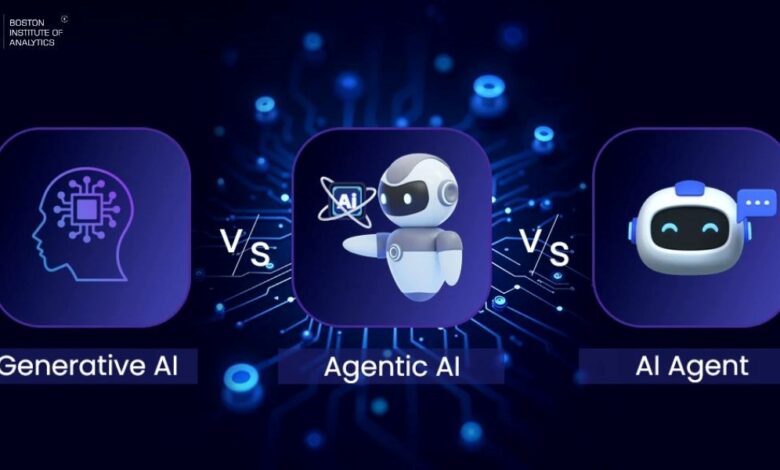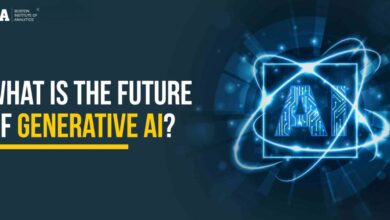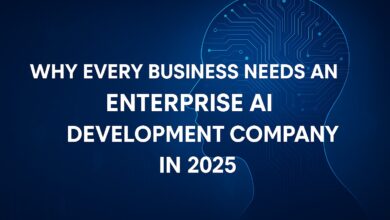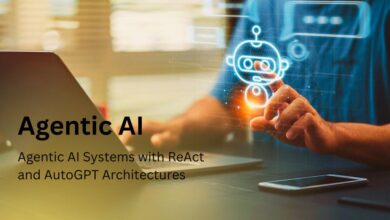From Generative to Agentic AI: The Evolution of Artificial Intelligence

In a couple short years, Artificial Intelligence has moved from being a futuristic concept to a technology embedded in our lives. We are in the midst of a historical moment, moving rapidly past the wonder of Generative AI and engaging in that exciting and complicated world of Agentic AI.
This moment represents a major transition in the capabilities of AI as it evolves from very powerful tools producing content to intelligent systems producing logic, planning, and execution of multi-step tasks to reach objective. Anyone trying to keep pace with the evolution from Generative AI to Agentic AI, whether as a developer, a business leader, or simply considering an Agentic AI Course or Generative AI Course, it is important to understand the leap we are experiencing right now.
The Reign of Generative AI: Creation and Content
Generative AI, thrust into the limelight by systems such as GPT (text), DALL-E (images), and Midjourney (images), has fundamentally changed the way we engage with digital creation by providing the means to generate new, high-quality content by recognizing patterns from data inputs from very large datasets.
What is Generative AI?
Generative AI ultimately is a class of models, but more specifically large language models (LLMs) and diffusion models, which learn the structure and distribution of either a set of input data, or of a language, to generate new instances that represent the training data.
- Key Capabilities: Creating text, code, images, music, and synthetic data.
- Mode of Operation: They operate primarily as reactive systems, responding to a direct, single prompt or input with an immediate output. They excel at single-turn tasks.
- Impact: They have significantly lowered the barrier to creating content, allowing rapid prototyping and personalization to spread exponentially. It has also created tremendous demand for these skills – as evident in the popularity of almost every Generative AI Course in existence today.
Generative AI has become ubiquitous, and while these AI models can write a thousand-word article, the limitation of generative AI is that it has no agency. While it can generate articles, for example, it cannot also (in its own mind) independently research the topic, develop the structure, search for facts to support its writing, draft new sections, review its work, and finally publish to a blog platform as an autonomous thinking writing partner of human authors. This limitation is exactly what the next wave of AI will address.
The Leap to Agentic AI: Autonomy and Action
Agentic Artificial Intelligence marks a new era. It is the architectural layer above Generative AI that empowers it the capacity to demonstrate agency, evaluate its goals, and perform complex sequenced behaviour. An Agentic AI system (also referred to as an AI Agent) serves as an intelligent assistant that conducts complex workflows from start to finish.
What is Agentic AI?
An Agentic AI system includes a “cognitive loop” of perceiving, reasoning, planning, and acting. An Agentic AI system is not merely a large model; it is an entire systems design that has several key components:
- The LLM/Core Model (The Brain): Repeatedly a Generative AI model (like GPT-4) that handles the intellectual, decision-making, and natural language understanding.
- The Planning Module: This constituent breaks down a high-level user goal (e.g., “Book me a trip to Japan”) into a series of smaller, controllable sub-tasks.
- The Memory Module: This is crucial for upholding context, learning from past activities, and storing long-term knowledge, allowing the agent to sustain multi-step processes.
- The Tool/Action Module (The Hands): This permits the agent to interact with the peripheral world by calling APIs, running code, using a search engine, or sending emails.
An Agentic AI system performs the action, instead of just generating text that describes an action. This news has quickly resonated with the market, and interest has rapidly exploded for any advanced Agentic AI Course.
The Transformative Potential of Agentic AI
The true capability of Agentic AI is to potentially automate entire business processes, and not just individual tasks.
- Autonomous Research: Agents can observe the web, draw inferences, and create weekly stakeholder reports customized and tailored to the specific, organizational needs without human engagement.
- Software Engineering: An example of a Dev Agent is for it to be provided with a high-level feature request, write the code, test the code, debug any errors, and then issue a pull request, all in a dedicated developer environment.
- Customer Service: Agents can transition from merely being chatbots to working through complex, multi-stage issues to resolve customer problems, often pulling in CRM system information, calling logistics partners, or interfacing with scheduling tools.
This type of transformational power leads to a requirement for a different skillset. While mastery of the foundational LLMs through a Generative AI course would be a good step, the design deployment and operationalization of these complex systems requires the specialized knowledge offered by an Agentic AI Course.
Preparing for the Agentic Future
The combination of robust Generative AI models and advanced control frameworks is hastening the arrival of genuinely intelligent digital assistants. Organizations need to prepare by making investments in both the relevant infrastructure and, most importantly, in their personnel.
For individuals, the career path is evolving:
- Start with the Foundation: A Generative AI Course provides the foundational understanding of how large models function, how to engineer effective prompts, and the constraints on creation.
- Move to the Architecture: An Agentic AI Course emphasizes system design: planning module design, craft interfaces to several tools (APIs), handle memory and context, and set necessary ethical guard rails.
The execution of work will include human oversight of autonomous, goal directed AI systems. The skill to design and manage agents will be the most in-demand skill of the next ten years.
Final Thoughts – Highlighting Keywords
Moving from Generative AI to Agentic AI is not a replication of one technology over another, but rather, it is an architectural enhancement of one technology. The Generative AI creates the intelligence, and the Agentic AI adds the contributing structure to apply that intelligence to practical problems. Professionals must become proficient at operating in both capacities.
Whether you are looking to build your ability to create content with a Generative AI Course, or if you are working to build autonomous systems for the future with a premier Agentic AI Course, now is the time to invest in your ability. The evolution of AI is headed toward a world where intelligent agents are working, autonomously, to handle complex tasks so human beings can elevate their capabilities toward creativity, strategy, and innovation. The age of the intelligent agent is upon us.






